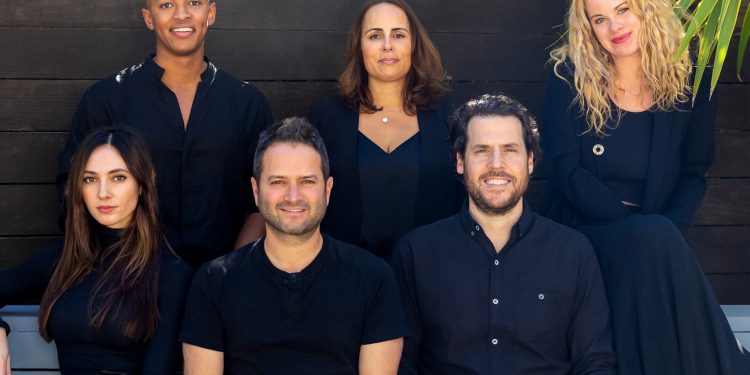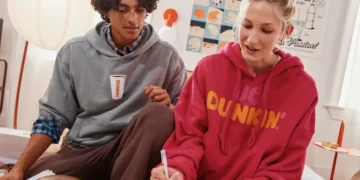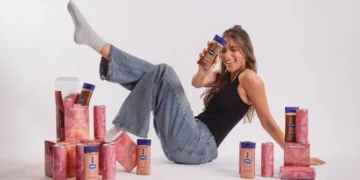Michael Smith, a general partner at Regeneration.VC, sat down with Jessica Abo to talk about his company and the steps you can take to unlock value where you work, especially if you’re looking to be part of the circular economy.
Jessica Abo: Michael, great to be with you. Can you first start by telling us what is the circular economy, and why does it matter?
Smith:
The circular economy is really a response to the linear economy, which we live in today, where we take things from the earth, make them into products, consume them, and then throw them away. 91% of all material ends up in a landfill, an ocean, or a natural system. So within a circular economy, we are, from the moment we’re making new products, thinking about materials that can be reused. We’re thinking about how we use them and trying to keep things extended beyond a single use or limited use. Almost two-thirds of global emissions are tied to the things that we consume every day, the food we’re eating, and the clothes we’re wearing. So if we can make things in a better way and keep them in circulation longer, we can drastically reduce emissions, can improve life on our planet.
I love your origin story. Can you share what you were doing before you started Regeneration, and what made you want to start this venture capital fund?
Smith:
I had been touring around the world as a DJ in my early twenties and thirties and was seeing the world change around me, the environment, and I really wanted to do something. And I had also been an entrepreneur and set up a business doing music for restaurants, hotels, and retail stores. And after I sold that business, I really wanted to marry my two interests in the environment with investing in a for-profit business. And so Regeneration is the marriage of those two things. We invest in early-stage companies working around circular economy opportunities.
And what is your overall fund strategy, and how do you use capital to drive positive environmental outcomes?
Smith:
We invest across three different areas. The first we call design. These are the materials that go into the products we consume, the fibers in clothes, the packaging, and the food and beverage inputs for the consumer brands. We’re buying formulations for beauty products. The second is use. These are the brands and services that use those products. Think about companies like Patagonia and Alternative Meats and things like that. And finally is re-use. So if we’re not sending something to a landfill and we’re putting it back through the supply chain, what are we doing with it? How do we upcycle what would otherwise be a waste stream into a valuable material?
We’ve invested in a company called CleanO2 which does all three of these things. First, they have equipment that captures HVAC emissions from air conditioning units and heaters, and it traps a material that is called potash. And that potash is then used to make a new material, a cleaning product, that is sold as a brand, a consumer soap. That’s the full chain of circularity. We get active with our portfolio companies. We’ve made eight investments so far. And we work to accelerate them and to bring them to market quicker so that they can actively compete and really scale out.
Can you tell us about your most recent investment and why you’re so excited about it?
Smith:
The most recent investment we’ve made it into a company called TULU. If you live in an apartment building, you’ve probably felt that you could share with residents certain things, like vacuum cleaners or maybe consumer products, video game systems. And they have units in your lobby that enable that. They let you unlock additional amenities and opportunities out of your living experience within shared environments, whether it be a scooter that you could take out with a helmet that’s much nicer than what you’d find on the street. Printing services so you don’t have to have your own printer and paper. We’re very excited about what it means for how manufacturers, like Bosch, who’s an investor and partner to them, are using that information to make products that can last longer, that can be used more. Where you may only use a vacuum cleaner once a week, in this model, that same vacuum cleaner is getting used many times, and it’s displacing each vacuum cleaner, upwards of 50, from being created in the first place. So we’re just very excited about the concept of unlocking the sharing economy within living environments.
Are big companies committing to circularity and are they taking advantage of these learnings?
Smith:
You have industry leaders like Apple getting back their phones and making new phones out of them, paying more to get those old phones back, and opening up repair opportunities for the first time in over a decade. You have companies like Amazon working on their packaging and committing to different circular outcomes. You have Nike that’s open-sourced strategies of how you can make your business more circular, particularly within the apparel world. Unilever, Procter & Gamble, and so many are committing to this, as well as cities and governments. So there’s a huge movement around circularity and we’re excited to be a small part of that.
For people who want to unlock circular opportunities within their businesses, what are some steps that you recommend?
Smith:
There are so many ways that you can apply it, but the most basic is, to go through your business now, and think about places that you have wasted. Think about times when you can increase efficiency and improve overall performance. Rank those for how much they’re going to cost you, how much they can make you, and how profitable they can become for you. And then do your best to figure out what the environmental implications may be and where new regulation is moving. There’s so much to be done here, and it’s a really fun way to think about how you can improve the planet and make money.
Read the full article here













